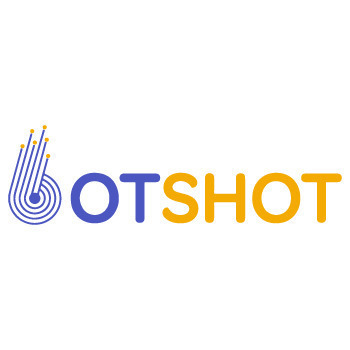4.25
Bluecore Review
Explore our Bluecore review: examines features, automation, pricing, security, support & value. See if this marketing platform meets your business needs!
Introduction to Bluecore
Welcome to our comprehensive Bluecore review. Bluecore is a retail marketing technology designed to help brands transform casual shoppers into lifetime customers by leveraging first-party data and identifying customer behavior to trigger personalized multi-channel communications. Understanding Bluecore means recognizing its potential to unify data and automate campaigns for increased relevance. This overview covers the Bluecore basics before diving deeper. Exploring the benefits of Bluecore, we'll examine how its features drive results for retailers. Getting started with Bluecore can seem daunting initially, but this review aims to clarify its core functionalities, ease of use, and overall value proposition for marketers seeking enhanced personalization and engagement.
Comprehensive overview and target audience
Bluecore positions itself as a retail marketing technology company focusing on intelligent customer movement and personalized experiences. Its platform leverages customer data and product catalogs to trigger individualized communications across channels like email, onsite messaging, and paid media. The primary goal is transforming casual shoppers into loyal customers, thereby increasing lifetime value for retail brands.
The target audience for Bluecore consists mainly of high volume direct to consumer brands and larger retail enterprises. These are businesses typically managing substantial customer databases and extensive product catalogs. They require sophisticated tools to automate marketing efforts at scale and deliver truly personalized interactions based on shopper identity and behavior, not just anonymous cookies. Companies seeking significant improvements in customer retention rates and campaign efficiency will find Bluecore particularly relevant. Evaluating the overall Bluecore value for money often hinges on a brand’s ability to leverage these advanced personalization capabilities effectively.
Bluecore emphasizes its first party data approach, crucial in today’s privacy focused landscape. The platform undergoes regular Bluecore updates and new features are introduced consistently, aiming to enhance predictive capabilities and campaign orchestration options. For businesses handling sensitive customer information, robust Bluecore security features are paramount; the platform incorporates measures designed to protect data integrity and ensure compliance with regulations like GDPR and CCPA. Prospective clients should undertake a detailed Bluecore pricing comparison, as it reflects its enterprise level focus; typically, it represents a more significant investment than entry level marketing tools. Comprehensive Bluecore support and training resources are available, including documentation and customer success teams, designed to help clients maximize their return on investment and navigate the platform’s extensive functionalities successfully! This support structure is vital for complex implementations.
User experience and functional capabilities
Navigating Bluecore presents a user experience tailored for sophisticated marketing teams. Bluecore user experience insights often highlight the platform’s comprehensive nature; it is powerful and feature rich, which can translate to a steeper learning curve compared to simpler tools. The interface prioritizes depth of functionality, allowing granular control over campaigns and audience segmentation. While not necessarily intuitive for beginners, experienced users typically appreciate the direct access to complex configurations and data visualizations once familiarized.
Understanding how to use Bluecore effectively revolves around leveraging its core functional capabilities. Users can create highly personalized, triggered campaigns based on real time customer behavior and predictive insights. This involves defining specific customer segments using first party data, mapping out automated communication flows across channels like email and onsite messages, and connecting these actions to the product catalog. The platform excels at automating these complex interactions at scale, moving beyond basic batch and blast methods to deliver relevant content based on individual shopper journeys and affinities.
The initial setup requires careful planning, and following a Bluecore implementation guide is strongly recommended. Implementation is typically a collaborative process involving the client’s technical team and Bluecore’s support staff. Key steps include integrating the Bluecore script onto the website, syncing the product catalog, and ensuring customer data flows correctly into the platform. This foundational work is critical for enabling accurate identification, segmentation, and personalized campaign triggers. Proper setup ensures the platform functions as intended from the outset.
Despite its power, users should be aware of common problems with Bluecore. The complexity that enables deep personalization can also be a hurdle; mastering the full suite of features takes time and dedicated effort. Data integration challenges can sometimes arise, requiring technical expertise to resolve discrepancies between systems. Furthermore, realizing the platform’s full potential heavily depends on the quality and completeness of the first party data being fed into it. Without a solid data strategy, campaign effectiveness might be limited.
Integrating Bluecore with other tools is a key functional strength. The platform is designed to sit within a broader marketing technology ecosystem. It offers various methods for integration with ecommerce platforms like Shopify or Magento, customer relationship management systems, data warehouses, and paid media platforms. This allows marketers to orchestrate customer experiences more seamlessly across different touchpoints, enriching Bluecore’s data with insights from other systems and pushing Bluecore segments to external activation channels. This interoperability is crucial for creating a unified customer view.
Bluecore continually evolves through regular Bluecore updates and new features. These updates often introduce enhanced predictive algorithms, additional communication channels, improved reporting dashboards, or streamlined workflow interfaces. Staying abreast of these changes allows users to leverage the latest capabilities. Adhering to best practices for Bluecore usage is vital for maximizing return on investment. Key practices include:
- Maintaining high quality, well structured first party data.
- Clearly defining campaign objectives and target segments.
- Utilizing A B testing for continuous optimization of messages and strategies.
- Leveraging the full scope of automation to scale personalization efforts effectively.
- Regularly reviewing performance analytics to refine tactics.
Who should be using Bluecore
Bluecore is specifically designed for retail businesses operating at scale, particularly high volume direct to consumer brands and larger enterprises. If your company manages a substantial customer database, boasts an extensive product catalog, and recognizes the limitations of generic marketing, Bluecore could be the right fit. It’s ideal for organizations seeking to move beyond basic segmentation and batch campaigns towards truly individualized customer experiences driven by first party data and predictive insights.
Specifically, Bluecore serves teams focused on increasing customer lifetime value and improving marketing efficiency. This includes:
- Digital marketing teams aiming to automate personalized communications across email, onsite messaging, and paid media.
- CRM managers looking to leverage rich customer behavior data for sophisticated segmentation and retention strategies.
- Ecommerce leaders wanting to connect online behavior directly to marketing triggers and product recommendations in real time.
- Organizations prioritizing a first party data strategy in response to evolving privacy regulations and the decline of third party cookies.
Consider a typical Bluecore use case scenario: A large apparel retailer wants to automatically trigger personalized emails based on browse abandonment, cart abandonment, and post purchase behaviors, dynamically populating emails with relevant products from their vast catalog based on individual shopper affinities. They also want to use these same audience segments for targeted onsite messages and sync them with paid media platforms for consistent cross channel experiences. Bluecore directly addresses these complex requirements.
Ultimately, Bluecore is best suited for retailers ready to invest in advanced personalization technology and commit to the necessary data integration and strategy development. Success relies heavily on adopting best practices for Bluecore, such as ensuring high quality data inputs, rigorously testing campaigns, and fully utilizing its automation capabilities. Companies unwilling or unable to dedicate resources to mastering its sophisticated features and maintaining data hygiene might not realize its full potential. It is built for those aiming for market leading personalization at scale.
Unique Features offered by Bluecore
Bluecore distinguishes itself through extensive customization options designed to tailor marketing efforts precisely to individual customer journeys. A key unique feature is its ability to deeply integrate a brands first party data with its product catalog in real time. This allows for hyper personalized campaign triggers based on specific behaviors like product views, category affinity changes, or predictive indicators such as likelihood to purchase. Customization extends to audience segmentation; marketers can build intricate segments using a vast array of data points, going far beyond basic demographics to include behavioral patterns and purchase history.
The platform enables detailed message personalization, dynamically inserting product recommendations, content blocks, and promotional offers relevant to each specific shopper within emails, onsite messages, and even paid media ads. This level of granular control is central to Customizing Bluecore for business growth, as it directly impacts engagement rates, conversion, and customer lifetime value. Unique features further enhance this capability:
- Predictive Audiences: Bluecore utilizes machine learning to identify audiences likely to perform certain actions, allowing proactive marketing.
- Real Time Triggers: Communications can be initiated instantly based on shopper actions, capturing interest at the peak moment.
- Multi Channel Orchestration: Campaigns can be customized to follow customers across different touchpoints seamlessly.
Integrating Bluecore with other tools is another significant feature contributing to its flexibility. Its architecture supports connections with various ecommerce platforms, CRM systems, and data warehouses. This interoperability allows businesses to centralize customer data and orchestrate even more sophisticated, personalized experiences across their entire marketing stack. While the platform’s depth and focus on large datasets mean Bluecore for small businesses might present challenges regarding resources and complexity, its advanced customization is invaluable for ambitious retailers scaling rapidly and seeking enterprise level personalization capabilities to fuel their expansion. The platform is fundamentally built for sophisticated, data driven retail marketing strategies.
Pain points that Bluecore will help you solve
Modern retail marketers face a constant stream of challenges in a rapidly evolving digital environment. Generic communications fail to capture attention, fragmented data obscures customer understanding, and manual processes hinder agility. Bluecore is engineered to directly address these critical operational frictions, helping brands transform common struggles into strategic advantages.
Bluecore provides solutions for several key pain points including:
- Moving beyond impersonal batch and blast marketing: If your messages lack relevance and fail to drive engagement, Bluecore enables hyper personalization at scale using first party data and real time behavior triggers.
- Overcoming data fragmentation: Struggling to achieve a unified customer view across various touchpoints! Bluecore centralizes customer data, linking identities and behaviors to create a cohesive profile for more effective targeting.
- Reducing manual campaign workload: Teams bogged down by the time consuming tasks of segmentation and campaign setup will find relief. Bluecore automates complex workflows, freeing up resources for strategic planning rather than repetitive execution.
- Capitalizing on real time engagement opportunities: Missing chances to act on immediate customer interest like browse or cart abandonment! Bluecore triggers personalized communications instantly based on these actions, maximizing conversion potential.
- Navigating the privacy first landscape: Adapting to the decline of third party cookies and increasing data privacy regulations is crucial. Bluecore’s foundation in first party data provides a robust and compliant path forward.
- Scaling personalization efforts effectively: Delivering truly individualized experiences across a large customer base and vast product catalog presents significant hurdles. Customizing Bluecore for business growth allows brands to manage this complexity through powerful automation and data handling capabilities. While Bluecore for different businesses sizes leans towards larger enterprises, the challenges it solves are common for any rapidly scaling retailer.
- Improving martech stack cohesion: Difficulty getting disparate marketing technologies to work together seamlessly limits potential. Integrating Bluecore with other tools like your ecommerce platform, CRM, or paid media channels is a core function, enabling smoother cross channel orchestration.
By tackling these common but significant obstacles, Bluecore empowers retail brands to build more meaningful customer relationships, optimize marketing spend, and ultimately drive sustainable revenue growth through smarter, data informed engagement strategies.
Scalability for business growth
Bluecore is fundamentally designed with scalability in mind, making it a strong partner for retail businesses experiencing or planning for significant growth. As your customer base expands and your product catalog diversifies, the platform’s robust infrastructure is built to handle increasing volumes of data and interactions without compromising performance. This capacity is crucial for maintaining personalized communication streams even as the scale of operations multiplies.
The automation capabilities inherent in Bluecore are central to its scalability proposition. Instead of requiring linear growth in marketing team size to manage more complex campaigns and larger audiences, Bluecore automates intricate workflows. This includes triggering personalized messages based on real time behavior across millions of customers and thousands of products. This efficiency allows marketing teams to focus on strategy and optimization rather than manual execution, enabling effective scaling of sophisticated marketing programs.
Furthermore, the ability to leverage first party data effectively provides a stable and future proof foundation for expansion. As privacy regulations evolve and third party cookies become less reliable, Bluecore’s approach ensures that your personalization efforts remain effective and compliant. Customizing Bluecore for business growth involves harnessing this data infrastructure to continually refine targeting and messaging as your business objectives evolve.
Key aspects supporting scalability include:
- Handling massive datasets: Bluecore readily processes vast amounts of customer behavior and product catalog data.
- Automated workflows: Reduces manual effort required for complex campaign orchestration across large audiences.
- Real time processing: Ensures timely and relevant interactions regardless of customer volume.
- First party data foundation: Provides a reliable data source for growth amidst market changes.
Customizing Bluecore for business scalability means configuring the platform not just for current needs, but also anticipating future requirements. Its architecture supports adding new channels, integrating with more tools within your tech stack, and adapting predictive models as your customer behavior patterns shift with growth. This adaptability ensures Bluecore remains a valuable asset throughout your business’s expansion journey.
Final Verdict about Bluecore
Drawing together the threads of our analysis, Bluecore emerges as a powerful and sophisticated retail marketing platform. It excels in leveraging first party data and real time customer behavior to automate highly personalized communications across multiple channels. Its core strength lies in moving brands beyond generic messaging, enabling truly individualized experiences that address key industry pain points like data fragmentation and the need for scalable personalization. For retailers struggling with impersonal outreach or managing complex campaigns manually, Bluecore offers a compelling solution centered on intelligent customer movement.
The platform is particularly well suited for larger direct to consumer brands and enterprises possessing significant customer data volumes and extensive product catalogs. Its scalability ensures it can grow alongside ambitious businesses, handling increasing data loads and maintaining performance. The deep customization options allow for granular control over segmentation and messaging, powered by predictive insights and seamless integration capabilities with other marketing technologies. However, this power comes with complexity. Mastering Bluecore requires dedicated resources, a solid data strategy, and a commitment to understanding its intricate functionalities. The learning curve can be steep, and realizing its full potential demands strategic implementation and ongoing optimization.
Our Final verdict on Bluecore is overwhelmingly positive for the right user. It is an enterprise grade solution designed for data driven retail marketers aiming for market leading personalization and customer retention. If your organization has the scale, the data maturity, and the resources to invest in a high end platform, Bluecore provides the tools necessary to transform casual shoppers into lifetime customers. It effectively bridges the gap between customer data, product catalogs, and automated multi channel engagement, making it a formidable asset for sophisticated retail marketing operations focused on long term growth and customer value.
Advantage
Disadvantage
Unified first-party data for complete customer view
AI predicts behavior driving personalized campaigns
Orchestrate consistent experiences across multiple channels
Build predictive audiences identifying high-value shoppers
Rapidly launch complex, personalized marketing campaigns
Disadvantage
Higher cost compared to simpler email platforms
Steep learning curve for advanced feature mastery
Technical resources needed for some integrations
Reporting customization options could be deeper
Primarily optimized for retail and e-commerce businesses
Rating
Web Based
Windows
Mac OS
Linux
Android
iOS
Phone Support
Email/Help Desk
AI Chat Bot
Live Support
24/7 Support
Forum & Community
Knowledge Base
Live Online
Documentation
Videos
In Person
Webinars
Company: Bluecore
Email: sales@bluecore.com
Address:
55 Water Street, 47th Floor, New York, NY 10041, United StatesPhone: Not Available
Implementation
Web Based
Windows
Mac OS
Linux
Android
iOS
Support
Phone Support
Email/Help Desk
AI Chat Bot
Live Support
24/7 Support
Forum & Community
Knowledge Base
Training
Live Online
Documentation
Videos
In Person
Webinars
Group text
Company: Bluecore
Email: sales@bluecore.com
Address:
55 Water Street, 47th Floor, New York, NY 10041, United States
Phone: Not Available
Alternative Products
Web Based
Documentation, Videos, Webinars
Email/Help Desk, Knowledge Base
Frequently Asked Questions
What is Bluecore?
Bluecore is a specialized retail marketing platform designed to leverage first-party customer data for creating highly personalized, multi-channel marketing experiences that drive revenue.
How can Bluecore help me?
Bluecore can help you by unifying your customer data (from website interactions, purchase history, email engagement, etc.) into single customer profiles, allowing you to understand shopper behavior deeply and automate personalized campaigns across email, website, SMS, and paid media, ultimately increasing conversions, order value, and customer lifetime value.
Who is Bluecore best suited for?
Bluecore is best suited for mid-market to enterprise-level retail and e-commerce brands, particularly those with a significant volume of customer data and a strategic focus on leveraging data science and AI for sophisticated personalization and multi-channel customer journeys.
What are Bluecore's key features for retail marketers?
Key features for retail marketers include robust identity resolution to create unified customer views, AI-powered predictive audiences for precise targeting, automated triggered campaigns based on customer behavior (like cart abandonment or price drops), dynamic product recommendations across channels, and multi-channel campaign orchestration (email, onsite, SMS, ads).
How does Bluecore handle customer data and personalization?
Bluecore ingests first-party data from various sources (website activity, CRM, POS, email interactions) to build comprehensive, unified customer profiles in real-time. It then uses AI and machine learning models to predict customer behavior, segment audiences dynamically, and trigger personalized content, offers, and product recommendations across different marketing channels, ensuring relevance at scale.
What kind of results can I expect from using Bluecore?
You can typically expect results such as significant lifts in conversion rates, increased average order value (AOV), higher customer lifetime value (LTV), improved email and website engagement metrics, reduced campaign setup time through automation, and more efficient marketing spend due to better targeting.
What does Bluecore cost?
Bluecore does not publicly list pricing as it’s typically customized based on factors like the volume of customer records or unique site visitors, the specific features and modules required, data processing needs, and desired service levels. You would need to contact their sales team for a custom quote based on your specific requirements.
Is Bluecore worth it?
For retailers with complex data, a large customer base, and a strategic need for advanced, AI-driven personalization across multiple channels, Bluecore can be worth the investment due to its potential to drive substantial revenue growth and customer loyalty. However, for smaller businesses with simpler needs or limited budgets, the cost and complexity might be prohibitive, and lighter-weight solutions could be more appropriate.






